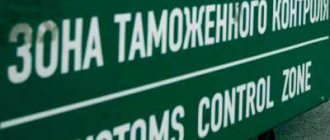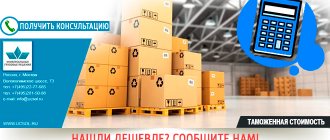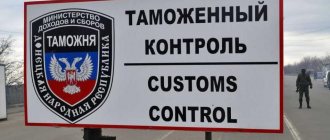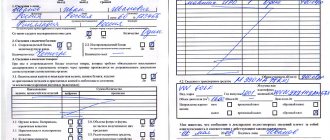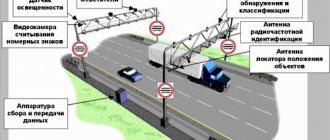HomeInformation Movement of cargo and goods across the customs border
of goods and cargo across the customs border Movement refers to the actions of importing goods into or exporting goods from a customs territory by any type of transport, and the procedure for movement is established by law. For the movement of goods, specially equipped checkpoints are provided, located at the customs border, as well as other places provided by law. Checkpoints are equipped at airports, sea and river ports, at bus and railway stations, and at cargo terminals. Movement across the customs border is controlled by customs authorities. Their task is to prevent the import of goods that pose a danger to citizens and the country, for example, smuggling, counterfeiting, and also to prevent the export of goods prohibited by law. In addition, customs authorities collect customs payments, replenishing the state budget. The most important stage in the movement of goods is customs clearance. First of all, for customs clearance of cargo and goods, you will need to register with customs and collect the necessary documents.
Places of movement across the customs border
Places for movement of cargo and goods across the customs border are intended for operations related to their customs clearance and control. These operations are carried out by customs officials to prevent the illegal import or export of cargo and goods. Checkpoints are located at the intersection of traffic flows with the border; in addition, they can be located at airports or seaports. Typically, temporary storage warehouses (TSWs) are used for customs clearance. Customs clearance of goods is carried out regardless of the type of transport used:
Clearance of certain types of goods is carried out at specialized customs offices, for example, for the clearance of excisable goods, special excise customs posts are provided, which are endowed with the appropriate competencies.
Places for movement of goods by legal entities and individual entrepreneurs Legal entities and individual entrepreneurs can move goods across the customs border at any customs posts located both near the border and within the country.
Places for movement of goods by individuals
Individuals can transport goods in both accompanied and unaccompanied baggage, by mail or by carrier. When moving goods in accompanied luggage, usually the places of customs clearance are the places of entry across the customs border. These may be border terminals, border crossings, checkpoints, airports, seaports, railway stations and other checkpoints located on the territory of the country. When moving goods in unaccompanied luggage, by mail or with the help of a carrier, customs clearance takes place at the temporary storage warehouse.
Temporary storage
The temporary storage stage is an optional stage of customs clearance. Placing goods in temporary storage warehouses is not required if customs clearance of goods is completed within one day after presentation of the goods to the customs authority of the Russian Federation, provided that these goods are under constant customs control and accounting of goods by the owner of a nearby temporary storage warehouse.
In this case, we are not talking about the entire customs procedure, called “temporary storage,” but only about one action included in this procedure - the actual placement of goods in a temporary storage warehouse.
From the requirements of paragraph 2 of Art. 77 of the Labor Code of the Russian Federation, we can conclude that temporary storage is a mandatory stage, and the placement of goods in a temporary storage warehouse can be actual or formal. According to paragraph 2 of Art. 77 of the Labor Code of the Russian Federation, upon presentation of goods at the point of their arrival, the status of those goods being in temporary storage from the moment of arrival is established in relation to these goods.
Movement of vehicles across the customs border
Movements of vehicles (TS) across the customs border can be carried out by both individuals and legal entities and individual entrepreneurs. Vehicles include cars, watercraft and aircraft, while vehicles, like any other goods, are subject to customs clearance. If vehicles are not used as means of international transportation, then from the point of view of customs rules, they are considered goods transported across the customs border. Temporarily imported vehicles for international transportation are exempt from customs duties.
There are various ways to move vehicles across the customs border:
- “under its own power”, when the owner or driver controls the vehicle;
- by a carrier in a car carrier or in the back of a truck;
- by rail on a platform or wagon;
- by sea transport;
- by air transport.
All participants in foreign economic activity, when importing and exporting vehicles, must remember the need for customs clearance - the most important stage in moving vehicles across the customs border. Since cars are excisable goods, they are processed at special excise customs posts located at the place of registration of the owner. At the same time, when importing a car into the Russian Federation at customs, you will need to provide the necessary documents, including connecting the vehicle to the GLONASS system and pay customs duties. Decision of the EEC Council dated December 20, 2017 N 107 established a single duty rate, depending on the age of the car, its cost and engine size. You also need to pay customs duties and recycling fees. Excise tax is not paid by individuals. The amount of customs payments for customs clearance of a car by an individual is much less than by a legal entity or individual entrepreneur.
Risks and pitfalls
In addition to additional costs, the customs transit procedure, due to its characteristics, carries additional risks:
- Double risk of control measures for your goods . The Customs Code prescribes that duties and fees should not be collected at the transit customs post, but does not in any way limit it in carrying out control activities. Therefore, the risk of getting weighed, x-rayed or searched increases exactly twice, because may occur at either of the two posts. Moreover, the very fact of placing goods under the VTT procedure increases the likelihood of weight, sanitary, radiation control, etc. And it’s simply humanly disgusting when a “client” goes to competitors, which is why transit checkpoint inspectors like to be mischievous!
- Inability to change destination. Please note that customs transit is processed once and the destination indicated in the transit declaration is final. That is, you cannot do VTT on VTT.
- Limitation of the deadline for customs transit . The EAEU Customs Code in Article 144 gives a vague wording that the deadline is set by the customs post of departure, guided by the “usual period for transporting goods based on the type of transport and the capabilities of the vehicle.” In real life, customs sets a realistic, but rather strict framework for completing customs transit. For example, for road transportation, the period is determined at the rate of 400-500 km per 1 day of travel, rounded up. For rail transportation, a special procedure applies: 2000 km in 1 month, but not less than 7 calendar days.
Features of moving across the customs border
the specifics of moving goods and cargo across the customs border . The main feature is the need for customs clearance for all transported goods. At the same time, for goods subject to certification it is necessary to draw up the appropriate documents: for goods of plant origin a phytocertificate will be required, for livestock products - a veterinary certificate, a declaration of conformity or a certificate of conformity for and others. In addition, in order to protect intellectual property, the trademark of the goods being moved can be entered into the ROIS; if this is confirmed during verification, then the owner will have to provide a letter of authorization. When moving medical goods, you need a Registration Permit from the Ministry of Health; for dual-use goods, you will need a conclusion from the FSTEC. An MSDS safety data sheet will be required for chemical products. Another feature is the payment of customs duties. Individuals cannot move goods intended for commercial use. In addition, you need to know the prohibitions and restrictions associated with the movement of goods across the customs border. When the features of moving goods across the customs border are well known and there is experience, then the movement does not cause difficulties. If you do not have such knowledge and experience, then in order to avoid delays at customs and unjustified costs associated with mistakes made, it is better to turn to professionals. Our specialists will help you quickly register the goods and cargo being moved in compliance with all the subtleties of customs legislation, without unjustified expenditure of time and money. We work at all customs houses and customs posts of the Russian Federation.
Procedure and types of customs procedures
Before planning a foreign trade transaction on the international market, a foreign trade participant must study in advance the requirements, procedure and conditions for processing documents for a specific category of goods. This will allow you to select the customs procedure in advance, calculate costs, plan a logistics scheme, and prepare the necessary permits.
Without knowing the law and procedure for transporting goods across the border, a participant in foreign trade activities risks not only incurring losses, but also losing time due to the idle time of goods at customs.
Customs procedures of the main type of customs regime
Release for domestic consumption (import)
This operation involves the import, presence and use of imported goods on the territory of the EAEU. The importer (purchaser) of products can use and dispose of them at their own discretion without any restrictions. In this case, the declarant himself is obliged to pay taxes and state duties. In case of non-tariff regulation, supporting documents must be provided.
Export (export of goods from the territory of the vehicle)
Free export of products outside the EAEU is carried out by its owner or an authorized person (representative). The exported goods lose the status of the EAEU and can be freely located outside its borders.
Transit
The regime of transit transportation (transportation) of goods through the territory of another country does not provide for customs payments and other fees. Cargo transportation is carried out under the control of an authorized person or with the participation of representatives of the customs service from the place of departure to the destination.
Economic customs procedures
bonded warehouse
The procedure involves sending foreign goods to a customs warehouse for the purpose of temporary placement or storage for up to 3 years without paying customs duties. At the same time, a ban is imposed on the use, distribution and processing of products. Conditions and temperature must comply with storage standards for a specific batch of products.
Processing for domestic consumption
The procedure involves carrying out measures in relation to goods that will subsequently be used in the country.
Processing in customs territory
The procedure is relevant exclusively for foreign goods that, after processing operations, will be exported outside the customs territory of the Union.
Processing outside the customs territory
The procedure involves the processing of products and raw materials for the purpose of further export. In this case, conditional exemption from payment of import duties, full or partial, is allowed.
Temporary importation
It does not provide for the registration of goods subject to import restrictions. Such cargo includes special equipment and means of transportation. The import of goods of this category prohibits their modification, processing or processing.
Free customs territory
The procedure involves the use of the warehouse only by representatives of Special Economic Zones.
Prohibiting customs procedures
Re-import
Involves the import of cargo or products previously exported outside the EAEU. Return importation is not subject to mandatory payments (taxes, fees, etc.). Goods can be freely transported across borders without any restrictions, but in compliance with regulatory requirements.
Re-export
The procedure involves the re-export of goods previously exported from the country. The procedure is applicable to imported products that are not applicable to the conditions of foreign economic activity or have defects. Such objects differ from the level of quality, characteristics, quantity and other features stated in the accompanying documents.
Destruction
The disposal procedure is applied to goods whose purpose and quality pose a threat to the state and population of the country, and also do not meet established standards. Such products do not have quality certificates or accompanying documents from control services. The deadlines for destruction are regulated by legal norms regarding a particular category of goods.
Refusal in favor of the state
The transfer of property rights in favor of the state by a participant in foreign economic activity occurs voluntarily. Customs authorities do not release goods, the sale and storage of which will cost the state more than the possible benefit. All information about the product must be supported by documents (characteristics of the product, reason for transfer to the state, place of storage). The action is applicable in situations where products belonging to a prohibited category are imported/exported or the cargo is not provided with a full package of documents.
Special customs procedures
Temporary removal
A measure providing for the export and use of items (goods, personal belongings) outside the country with their subsequent return. For example, if the declarant exports personal belongings or items that, when re-imported, will not lose their characteristics and purpose.
Free trade
The procedure applies to goods that can be sold in duty-free stores (for example, Duty free).
Free warehouse
The procedure applies to storing imported goods in a warehouse for a certain time under the control of customs authorities. No duties are paid during this period.
Special procedure
The measure applies to certain categories of goods of foreign origin.
Classification by customs procedures makes it possible to correctly select and apply the procedure for clearing goods in accordance with legal norms. The choice of one or another customs procedure involves the process of submitting to a number of restrictions on import, export, purpose, purpose and use.
Illegal movement across the customs border
Illegal movement across the customs border is a violation of the procedure established by law for the movement of goods across the customs border. Such a violation is punishable by law in accordance with Article 16.1. Code of Administrative Offenses of the Russian Federation and entails the imposition of a fine for participants in foreign economic activity. First of all, the inadmissibility of moving both goods and vehicles in places not established by law is emphasized. For such a violation, a fine of three times the value of the goods may be imposed, as well as confiscation of the goods. Punishment awaits both legal entities and individual entrepreneurs, as well as individuals, as well as officials. A similar punishment awaits violators for attempting to smuggle goods secretly, using hiding places or other tricks, for example, cover goods. Providing false information or invalid or counterfeit documents to customs inspectors is a serious violation punishable by a fine. It is worth paying attention to the mandatory compliance with the procedure for moving goods by individuals, especially the inadmissibility of transporting goods that are a commercial consignment. The requirements for goods moved by individuals are specified in the Decision of the EEC Council dated December 20, 2017 N 107. Although the most common type of punishment is a fine, but if the cost of illegally moved goods or vehicles turns out to be more than 250,000 rubles or the goods are on the list of Part 2 of Art. 188 of the Criminal Code, the violator faces criminal punishment for smuggling.
Time limits for placing goods under the customs procedure
The time period for placing goods under a customs procedure is the period during which the declarant must declare the goods by submitting a declaration to the customs authority under the required customs procedure. Depending on its type, this period may vary (for example, for imported goods this period is 4 months. The right to choose one or another procedure belongs to the declarant and the owner of the cargo, and it is they who bear legal responsibility in case of non-compliance with its terms and requirements. According to the provisions of Art. 127 of the EAEU Labor Code, goods may be placed under other customs procedures. In this case, the declarant has the right to change the selected procedure to another (Article 127.3 of the EAEU Labor Code). Control over compliance with the conditions of the procedures is assigned to the customs authorities. After submitting the declaration, the customs inspector must within 1 hour to accept the customs declaration for work, or send it to the declarant for revision.
The day the goods are placed under the selected procedure is the day the goods are released by the customs authority.
Customs release of goods is an action of customs authorities allowing interested parties to use goods in accordance with the terms of the declared procedure or in accordance with the conditions established for certain categories of goods that are not subject to placement under customs regimes in accordance with this Code (Article 2 of the EAEU Labor Code).
The procedure for moving individuals across the customs border
The procedure for moving individuals across the customs border is established by customs rules. These rules include requirements for the application of restrictions, payment of customs duties, and paperwork. The movement procedure must be followed by all participants in foreign trade activities, including individuals. The legislative basis is the EAEU Labor Code, as well as other legislative acts. In this case, the most important document is the Decision of the EEC Council dated December 20, 2017 N 107, which limits the types and quantities of goods that an individual can import without paying customs duties, as well as the amount of import duties. The most important requirement is the purpose of goods transported by individuals: these can only be personal items intended for household family purposes. Individuals cannot transport goods intended for production purposes for sale. The purpose of the goods is determined by the customs inspector based on the properties of the goods, the frequency of movement and their quantity. Individuals can import and export goods only in places established by law where customs control is carried out. These are checkpoints where everything is provided for observation and questioning of individuals, verification of documents and information provided, for inspection of individuals, as well as for inspection and inspection of goods and vehicles transported by them. It is important for individuals to remember that there are goods that must be indicated in the declaration when crossing the border: cultural property, rare plants or animals, vehicles, state awards, weapons, medicines including potent substances or drugs. You can transport funds without customs clearance if their amount does not exceed the equivalent of 10,000 US dollars. Our company’s specialists provide customs clearance services for goods and cargo transported by individuals in all customs offices of Russia: at airports, ports, railway stations, automobile temporary storage warehouses, and in warehouses of express carriers. Documents and information may be required for customs clearance:
Documents and information for customs clearance of goods and personal belongings of an individual at customs
- List of documents for registration of an individual at customs (View)
- List of documents for a customs individual “Purchase - Import” (View)
- List of documents for a customs individual “Personal belongings - import” (View)
- List of documents for a customs individual “Personal belongings - export” (View)
- Passenger customs declaration (View)
- Passenger customs declaration for declaring funds (Watch)
Customs Broker
Participants in the procedure for customs declaration of goods can be either the declarant himself or a customs broker (if the declarant has used his services to participate in customs clearance).
Declarant is a person (individual or legal) who declares goods or a person on whose behalf these goods are declared. The legal status of the declarant is enshrined in Art. Art. 126 and 127 of the Labor Code of the Russian Federation.
A customs broker is an intermediary organization that carries out customs procedures and operations established by law on behalf of and on behalf of the declarant or another person who is legally entrusted with the obligation or who is granted the right to carry out customs procedures and operations. It can only be a Russian legal entity included in the Register of Customs Brokers (Representatives). The legal status of a customs broker is defined in Art. Art. 139 - 145 Labor Code of the Russian Federation. The customs declaration form is directly filled out by a customs broker employee - a customs clearance specialist.
Customs clearance specialist is an individual who has special knowledge in the field of customs clearance of goods and is included in the staff of a customs broker. The qualifications and special knowledge of a customs clearance specialist must be confirmed by the appropriate qualification certificate issued by the Federal Customs Service of the Russian Federation. The program for conducting a mandatory qualification exam for specialists in the field of customs clearance is approved by the Ministry of Economic Development and Trade of the Russian Federation. The legal status of a customs clearance specialist is established by Art. Art. 146 - 148 Labor Code of the Russian Federation.
Services for registration of goods transported across the customs border
Ours provides services for the registration of goods transported across the customs border to all participants in foreign trade activities:
- For individuals
- Legal entities
- For individual entrepreneurs
We provide customs clearance services on the basis of a brokerage agreement - a customs representative and bear full legal responsibility to customs and the client. We submit customs declarations under the broker's seal and the client's digital signature. We know all the intricacies of customs legislation and will help you quickly and without delays at customs to clear goods transported across the customs border. We work with all Russian customs posts located:
- Airports
- sea ports
- Automobile checkpoints (MAPP, DAPP)
- Railway checkpoints
- Warehouses of transport organizations express carriers (UPS, DHL, FedEx, EMS and others)
Procedure for registration of customs transit
The consignment of goods is placed under the customs transit procedure by the customs authority based on the declaration of the declarant. But independent registration is an unreasonably troublesome and expensive path. In real life, transport companies do this “on the fly,” so the surest way is to request VTT from the company providing you with transportation services.
So, to transport goods under the VTT procedure using your logisticians, they need to provide:
- invoice and packing list certified by the sender's seal;
- original international transport document: bill of lading, CMR, railway or air waybill;
- statutory documents of your organization;
- a power of attorney to the person who will directly deal with registration and work with the cargo (most likely, it has already been issued to the transport company);
- name and details of the customs post of destination.
A decent forwarder will do the rest himself. The procedure takes one business day to complete. For all documents except a power of attorney, scans with stamps are usually sufficient.
When placing cargo under the VTT procedure, a separate transit declaration is issued for it, which must be attached to the package of documents for final release at the destination.
Terms and cost of services in processing goods transported across the customs border
The time period for customs clearance of transported goods is several hours!
The price and cost of the service in the registration of goods transported across the customs border in our company are the minimum in the market and depend on the place of registration and the participant in foreign trade activities, as well as many other tasks necessary for the client - our partner! We will prepare and submit a customs declaration to the customs authority in electronic form or on paper. The services we provide in the registration of goods transported across the customs border are minimal in the market and amount to:
- for individuals – from 3000 rub.
- for legal entities and individual entrepreneurs – from 5,000 rubles.
We are confident that we will become your reliable partner at customs!
Declaration
The main stage of customs clearance is the declaration of goods. Goods are subject to mandatory declaration to customs authorities provided they are moved across the customs border of the Russian Federation, a change in the customs regime, as well as in other cases provided for in Art. Art. 183, 184, 247, 391 Labor Code of the Russian Federation.
Customs clearance, including filling out the necessary documents, as a general rule, is carried out in Russian. At the same time, the Labor Code of the Russian Federation also provides for exceptions to this rule (Article 65). Customs authorities may accept and use for customs purposes duly certified documents, as well as information prepared in those foreign languages spoken by officials authorized by customs authorities. In world practice, two methods of approval and certification of such foreign documents are most often used: 1) through consular legalization; 2) by affixing an apostille.
Declaration (from the Latin declaratio - statement, announcement) - a statement to the customs authority in the established form of information about transported goods and vehicles necessary for customs purposes.
Declaration is made by the declarant or a customs broker at the choice of the declarant.
The Labor Code of the Russian Federation provides for four forms of declaration:
- oral;
- written;
— electronic;
- conclusive.
In non-trade transactions (during customs clearance of hand luggage and passenger luggage), declarations are used in written, oral or implicit form. An example of a declaration in a conclusive form is the passage of passengers at international airports along the “green corridor”. In this case, the passenger, by his action, declares to customs officials that he does not have goods when crossing the border, which are subject to mandatory written declaration.
In trade turnover (during customs clearance of goods transported for commercial purposes), declarations are used in written and electronic forms. Today, there are cases where Russian customs authorities accept goods for customs clearance only in the electronic form of a cargo customs declaration.
The main document for declaration is the customs declaration. The following types of customs declarations are distinguished:
1) complete;
2) incomplete (Article 135 of the Labor Code of the Russian Federation);
3) temporary (Article 138 of the Labor Code of the Russian Federation);
4) periodic (Article 136 of the Labor Code of the Russian Federation).
The declarant has the right to submit a customs declaration to any customs authority that has the authority to accept the customs declarations provided. In order to ensure the greatest efficiency of control over compliance with the established customs legislation of the Russian Federation, the Ministry of Economic Development and Trade of the Russian Federation may determine the specialization of individual customs authorities in the cases provided for in paragraph 2 of Art. 125 Labor Code of the Russian Federation. When submitting a customs declaration to a customs authority that cannot carry out customs clearance of this product, the customs declaration on the day of its submission is sent to the authorized customs authority. The established period for accepting a customs declaration in this case must be extended by the time necessary to carry out the procedure for its forwarding, but such a period cannot be more than two working days.
A customs declaration in respect of goods crossing the border and imported into the customs territory of the Russian Federation is submitted no later than 15 days from the date of actual presentation of such goods to the customs authorities at the place of arrival of such goods into the customs territory of the Russian Federation or from the moment of completion of the internal customs transit procedure, in the case when the declaration of the specified goods is carried out in a place other than the place of their arrival. However, there are exceptions to this rule as listed below.
If such a period is not enough for the declarant to collect the documents and information established by customs legislation, based on a reasoned request of the person declaring the goods in writing, the customs authority has the right to extend the period for filing a customs declaration. At the same time, it should be taken into account that the extension of the deadline for filing a customs declaration should not entail a violation of the period established for the temporary storage of goods. If the end of the established deadline for filing a customs declaration falls on a day that is not a working day of the customs authority, the working day following this day should be considered the end of this period.
When importing into the customs territory of goods used for the purpose of eliminating the consequences of natural disasters, accidents and catastrophes, as well as goods with a short shelf life, live animals, radioactive materials, international mail and express cargo, information messages and other materials intended for media and other similar goods, the procedure for customs clearance of such goods is carried out in a simplified form, with the establishment of the order of their priority and, in addition, using special simplified procedures for their customs clearance.
A customs declaration filled out in relation to goods exported outside the customs territory of the Russian Federation must be submitted before the departure of such goods from the customs territory of the Russian Federation, the only exception here is the cases of import/export and declaration of goods belonging to the category of goods transported through the use of power lines .
The Customs Code of the Russian Federation also provides for the institution of preliminary declaration. Any interested person can contact the customs authority by submitting a customs declaration 15 days before the import of goods (if the goods are declared at the place of their arrival) or the completion of the internal customs transit regime for them. If, after filing a customs declaration, the goods specified in it are not presented to the customs authority within 15 calendar days, then such a declaration will be considered not accepted. A customs declaration in respect of imported goods can be made even before the arrival of such goods into the customs territory of the Russian Federation or until the completion of the internal customs transit regime.
If for customs operations there is a need to use transport or other business documents accompanying the declared goods, the customs authority in the process of preliminary declaration of such goods has the right to accept copies of such documents, certified in the prescribed manner, and, if necessary, upon the actual arrival of these of goods into the territory of the Russian Federation compares the information specified in previously provided copies with the original documents.
Upon completion of the verification of the customs declaration and payment of the amounts of customs duties and taxes established by customs legislation before the arrival of the declared goods on the customs territory of the Russian Federation, the accepted customs declaration can serve as the basis and be used as a single document used in the process of customs procedures.
